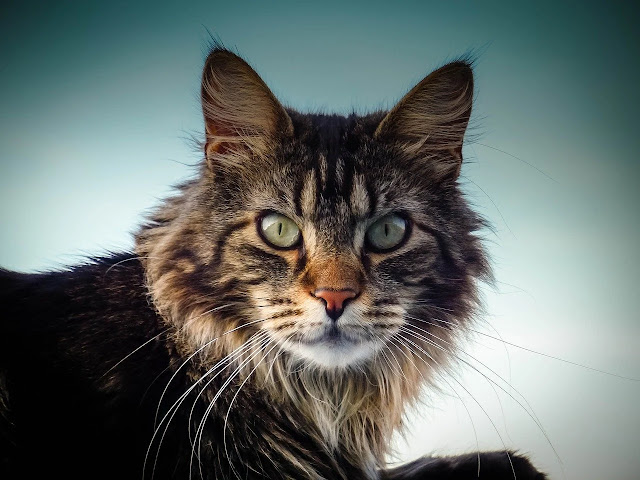Cat Lifespan: How Long Does a Cat Live?
Cat Lifespan
Curious about how long your feline companion will be by your side? The lifespan of a cat varies depending on various factors. It’s important to understand the average cat lifespan, the factors that can influence it, and how to ensure your furry friend lives a long and healthy life. In this article, we will explore different aspects of cat lifespan, including indoor and outdoor cat lifespans, life expectancy charts, and breed-specific lifespans.
Average Cat Lifespan
The average lifespan of a cat is typically around 12 to 15 years. However, many cats live well into their late teens or even early twenties with proper care and attention. It’s important to note that the lifespan can vary depending on several factors, including genetics, diet, environment, and overall health.
Cats that are well-cared for, kept indoors, and provided with regular veterinary check-ups and a balanced diet have a higher chance of living a longer and healthier life. Additionally, spaying or neutering your cat can help prevent certain health issues and extend their lifespan.
Indoor Cat Lifespan
Indoor cats generally live longer than outdoor cats due to minimized exposure to environmental hazards, diseases, and accidents. With a safe and comfortable indoor environment, cats can have a lifespan ranging from 15 to 20 years or more. Indoor cats also have a reduced risk of contracting diseases from other animals and are less likely to be involved in accidents like road injuries.
To ensure your indoor cat lives a long and happy life, provide them with regular exercise, mental stimulation, and a well-balanced diet. Creating a cat-friendly environment with scratching posts, interactive toys, and comfortable resting areas is also essential for their overall well-being.
How Long Cats Live Outdoors
Outdoor cats are exposed to various dangers and risks that can shorten their lifespan. They face the threat of vehicles, diseases, predators, and environmental hazards. The lifespan of an outdoor cat is typically shorter than that of an indoor cat, with an average range of 2 to 5 years.
Factors such as availability of food, access to clean water, and weather conditions can play a significant role in an outdoor cat’s lifespan. Providing outdoor cats with shelter, regular veterinary care, and keeping them in a safe and enclosed area can help extend their lifespan and improve their overall well-being.
Cat Life Expectancy Chart
Understanding the life expectancy of different cat breeds can give you a better idea of what to expect for your furry friend. Although these charts provide a general range, it’s important to remember that individual cats may live longer or shorter lives based on various factors.
Here’s a cat life expectancy chart based on different breeds:
BreedAverage LifespanSiamese12-16 yearsPersian12-16 yearsMaine Coon12-15 yearsBengal10-16 yearsSphynx12-16 years Remember that these numbers are averages, and individual cats can live longer or shorter lives than indicated. Proper care, nutrition, and regular veterinary check-ups play a crucial role in determining a cat’s lifespan.
Lifespan of Domestic Cats
Domestic cats, which include mixed breeds and non-purebred cats, generally have a similar lifespan to purebred cats. As mentioned earlier, the average lifespan of a domestic cat ranges from 12 to 15 years, but they can live well into their late teens or early twenties with proper care.
Regular veterinary check-ups, vaccinations, a balanced diet, and a safe indoor environment are important aspects of ensuring a long and healthy life for domestic cats. Monitoring their weight, dental health, and overall well-being is crucial for detecting any health issues early on and providing prompt treatment.
Cat Breed Lifespan
While the average lifespan of domestic cats is similar across different breeds, there are a few breed-specific factors that can influence their longevity. Some cat breeds are known to have certain genetic predispositions to specific health conditions, which can affect their lifespan.
Here are a few examples of cat breed lifespans:
- Ragdoll: Ragdolls are generally known to have a lifespan of around 12-15 years.
- Persian: Persians have an average lifespan of 12-16 years.
- Siamese: Siamese cats often live between 12-16 years.
- Maine Coon: Maine Coons are known for their relatively long lifespan of around 12-15 years.
- Abyssinian: Abyssinians have a lifespan of 9-15 years on average.
It’s important to note that these are general estimates, and individual cats may vary. The overall health, genetics, and the care provided play a crucial role in determining a cat’s lifespan, regardless of their breed.
Conclusion
While there isn’t a definitive answer to the question “how long does a cat live?”, understanding the average lifespan, factors that influence it, and the specific needs of different breeds can help ensure your feline friend enjoys a long and healthy life. By providing proper care, nutrition, regular veterinary check-ups, and a safe environment, you can maximize your cat’s lifespan and create many wonderful memories together.













